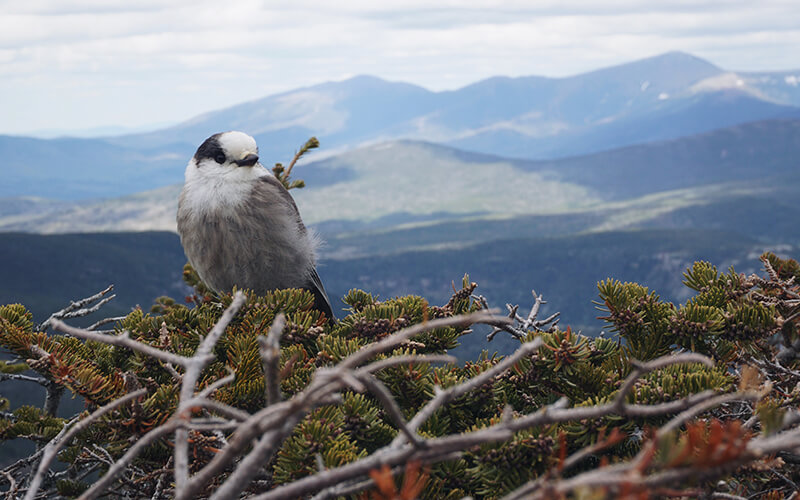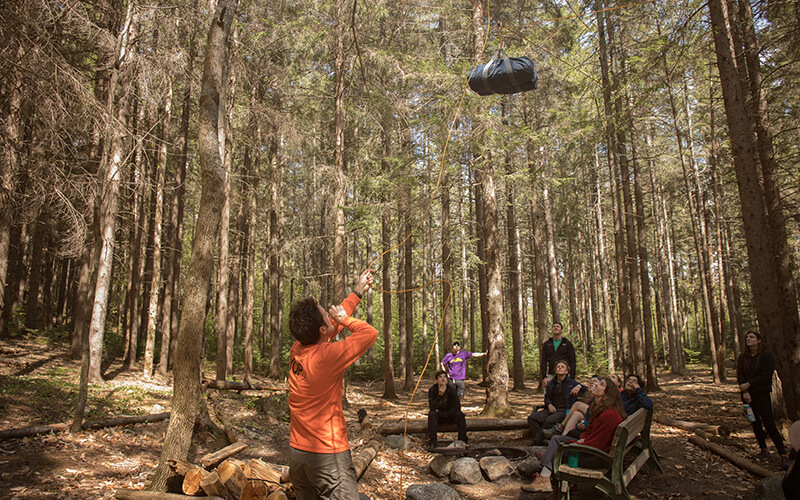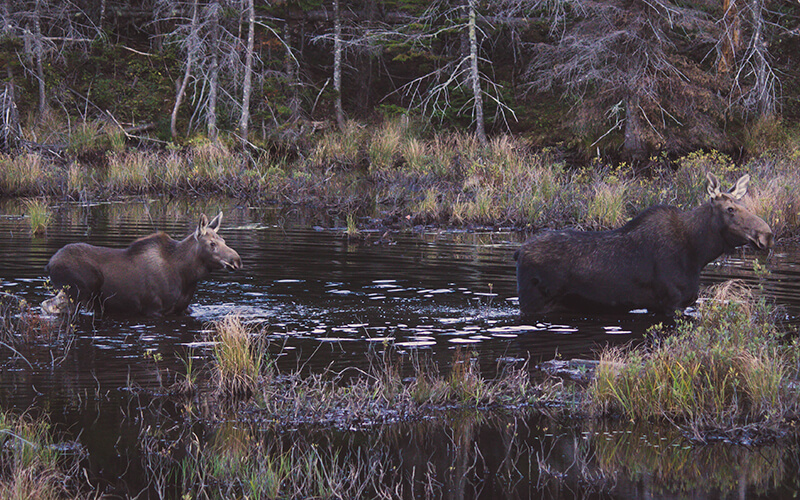

Humans are visitors to the homes of birds and other wildlife when enjoying the mountains and backcountry and should respect their fragile habitats, according to Leave No Trace.
When humans leave cities and towns and venture into the backcountry, we are, in a very real way, visitors in someone else’s home. Countless animals, birds, fish, and insects inhabit the natural spaces we love, and our very presence can throw off delicately balanced ecosystems built over millennia.


Hanging camp food out of reach of claws and jaws is one of the best ways we can respect wildlife in the backcountry.
Protect your food
Over time, birds and animals in even remote places become habituated to human activity and associate humans with food. Chipmunks, mice, and squirrels routinely chew through tents and backpacks to get to food. In the case of larger animals, bears can become a real hazard to visitors and are often relocated or put down. “It is unfortunate that an animal would need to be removed or killed by preventable human actions,” says Alex DeLucia, Leave No Trace programs manager for AMC.
Protect your food in the backcountry by storing it in bear canisters or hanging it rather than leaving items exposed in your tent or campsite. If a front-country campground doesn’t provide a bear box, store food overnight in your car. Many established backcountry sites—like AMC’s shelters and tent sites—provide bear boxes and designated food areas. Several companies make gnaw-proof storage sacks that can stand up to razor-sharp teeth of smaller critters, too.
“My pack has one unusable side pocket from that one time I accidently left a granola bar in it overnight,” DeLucia recalls. “There is now a large hole a chipmunk chewed in my pack to get it. It is a constant reminder to hang my food at night.”


Approaching wildlife in the backcountry can put you and the animal in harm’s way.
Keep your distance
Everyone wants to see a moose or another iconic northeastern species, but getting too close alters an animal’s behavior and puts the visitor and the animal in unnecessary danger. (A quick video search for Yellowstone National Park visitors being gored by bison they approached will demonstrate these dangers in graphic detail.) In winter, DeLucia says getting too close to wildlife can actually put the animals’ lives in danger: Many work very hard in warmer months to store energy to get them through the lean winter months, and spooking animals causes them to waste energy and can jeopardize their survival. Intentionally feeding wildlife is a problem as well. Take gray jays, for example; these birds have so closely associated humans with food that in some cases they follow hikers on the trail and dive bomb them. People love to feed them, but Leave No Trace extends to inside the bellies of birds and other wildlife.
In any season, if your goal is to see wildlife, DeLucia suggests bringing along binoculars or a camera with a long lens for that “up-close” feeling. Sick or abandoned animals should be reported to a ranger or game warden rather than approached or removed. Make camp no closer than 200 feet from water sources to ensure wildlife have easy access to drinking water.
“It is never OK to approach a wild animal,” he adds. “If one begins to approach you it is best to move away and get yourself in a safe place. Many animals are curious but will pass by if you give them the space to do so.”